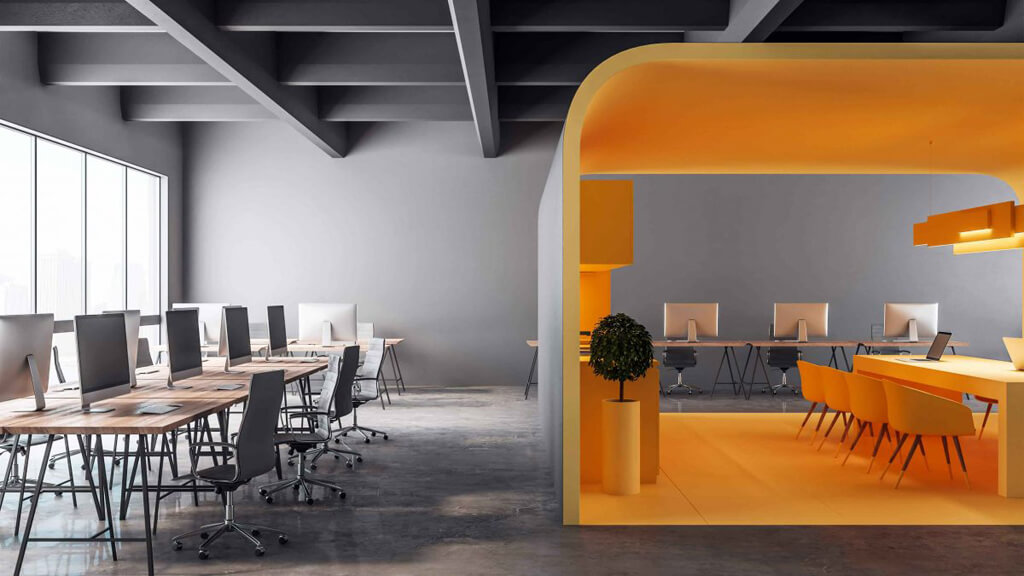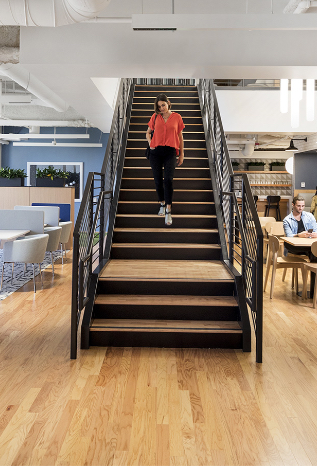The Covid-19 pandemic disrupted the long-held notion of what a traditional work environment should look like. With the last couple of years proving that it’s entirely possible to be productive when working from home, many businesses are rethinking office space. From shared offices to smaller satellite spaces, here’s what the future of office space looks like.
Who needs office space?
After nearly two years of successful home working, you might think that the answer is no one. While there are some companies without offices, most businesses do still need to have an office space, even if they move towards a hybrid model of working with time split between the office and home working.
Research conducted in March 2021 found that 67% of remote workers felt disconnected from their colleagues, whilst 49% stated that this feeling of disconnect negatively impacted how they viewed their job.
Another study by Indeed, this time looking at US workers, found that 45% missed having in-person meetings with their colleagues, and 46% missed having side conversations in the office. That connection with colleagues is something that many people miss, and although Zoom and Slack are wonderful tools, it’s difficult to recreate water-cooler chats in a remote working environment.
Hybrid working: the solution for businesses?
Hybrid working is likely to become even more popular over the coming months, as increasing numbers of people return to the office after a long period of working solely from home. Although many people do miss that feeling of connection with colleagues, many others enjoy working remotely or in coworking spaces as it can offer an improved work-life balance, particularly for those with long commutes.
The answer to the future of the office, then, seems to be to offer hybrid working, a form of flexible working that allows employees to work from home part of the time, and come into the office on other days. To ensure this is a Covid-safe office, companies can stagger the days that staff are in the office, with some companies rotating teams on a weekly basis and others allowing employees to choose for themselves when they’re in the office.
If you’re a start-up looking to invest in a young talent pool, then ensuring you have a physical office for hybrid working is crucial. A study by McKinsey found that 48% of 18 to 29-year olds want to move towards hybrid working, where they work remotely for 2 or 3 days a week and the rest of the time is spent in the office.
This is important for young graduates in particular, as onboarding remotely can be more challenging than in an office environment, where you can ask your mentor questions at any point during the day. The lack of on-the-job training has been felt particularly acutely by this generation, and this is partly driving their desire to return to the office – at least for part of the time.
Rethinking office space
To accommodate this, in the future office layouts are set to look a little different. Let’s take a look at some of the ways in which you could make hybrid working work for you.
Collaboration stations
There is the opportunity to redesign what your office looks like in order to encourage collaboration and socialising. Unstructured collaboration outside of formal meetings is said to be crucial for improving performance at both a team and business level. Providing breakout zones and workstations where staff can feel free to mull over ideas without disturbing their colleagues is going to be key to the future of the hybrid working model.
Quiet zones
It’s important to recognise, though, that some people will still want peace and quiet in the environment – particularly those who don’t have a home life that’s particularly conducive to working from home. Whether it’s fighting for space at the kitchen table with a partner who also works from home, sharing with flatmates who keep different schedules, or simply a lack of space, home working isn’t productive for everyone. It can’t be assumed that people only come into the office to socialise. Companies should look to have quiet zones in their offices as well as more collaborative areas.
Satellite offices
Of course, with the return to the office also comes the return of the commute. One study from the States found that 23% of employees had left a job due to their commute. In a job market where companies are hiring remotely and therefore have access to a much wider pool of talent, as an employer, you need to go above and beyond to retain your employees. One solution could be to offer satellite offices in key locations. Not only could this help to retain the staff you already have, but it could also help you to recruit others.
Shared office space
If your full workforce isn’t returning to the office, it may not be viable for you to keep your current office. In that case, a shared office space can be a great way to provide your employees with a much-needed base whilst saving on overheads. Shared office space gives you all the perks of a serviced office space without the sole expense or responsibility for managing it. Simply book it out and get your team along for a couple of hours, a day, or a week at a time
Office space isn’t going anywhere any time soon – but the role of the office is changing. It’s natural that the layout of offices and the way we use them change as well. Serviced offices with various spaces are the perfect solution, offering meeting rooms, breakout zones, booths and quiet areas to suit workers of all kinds. Get in touch with Easy Offices today if you want to learn more about our office spaces all across the UK.

